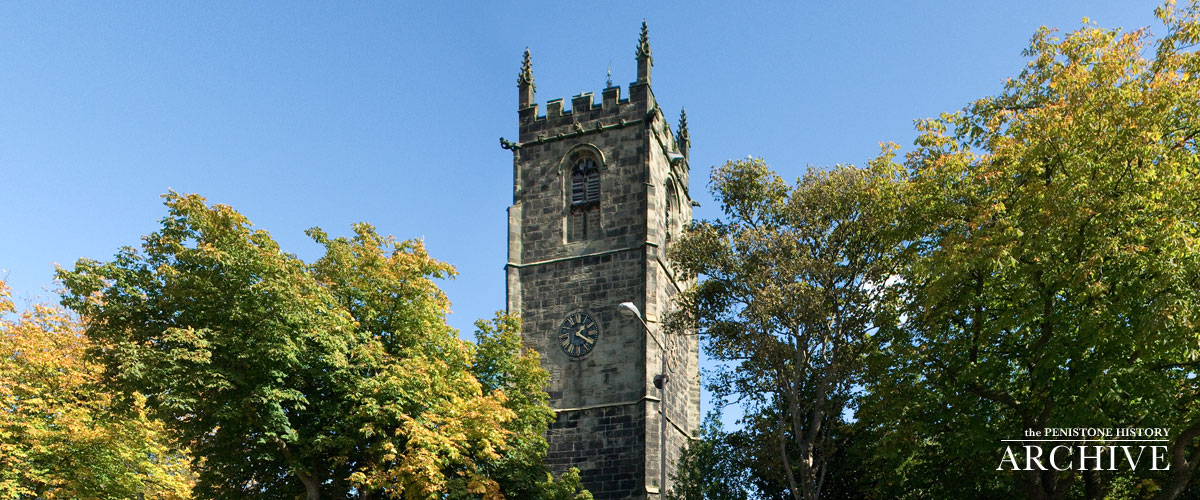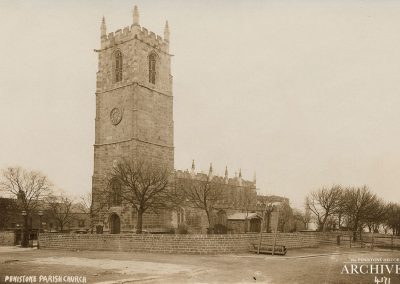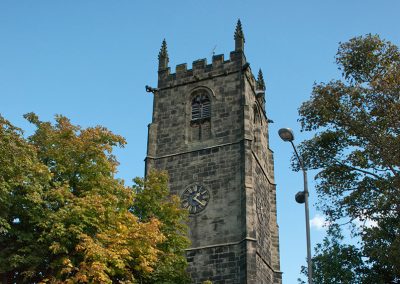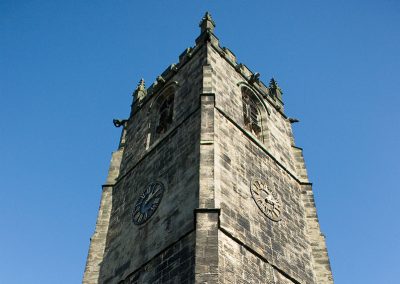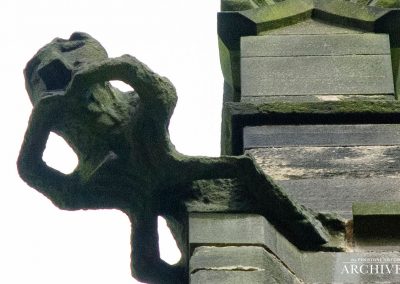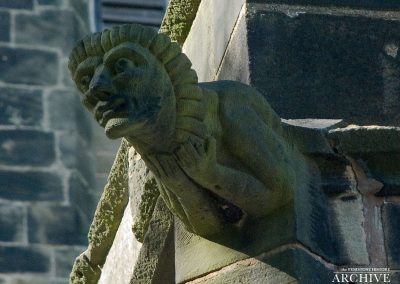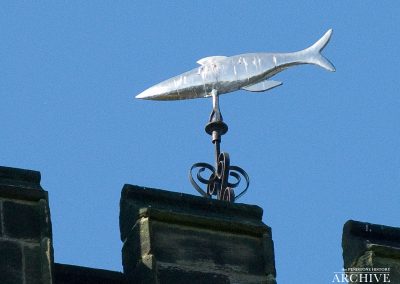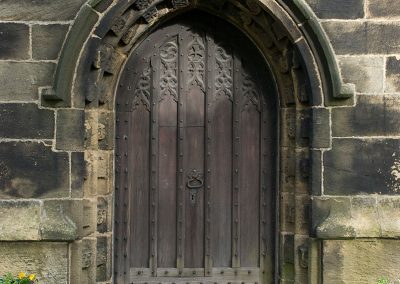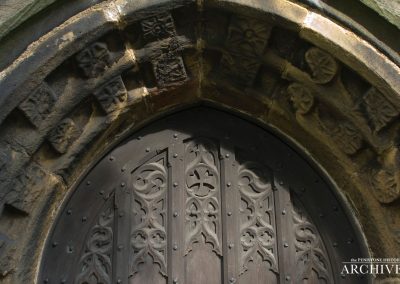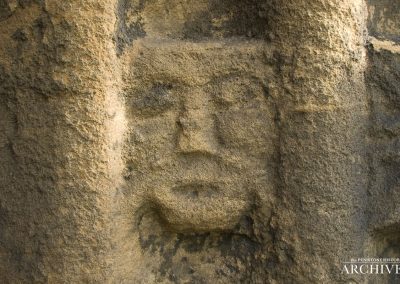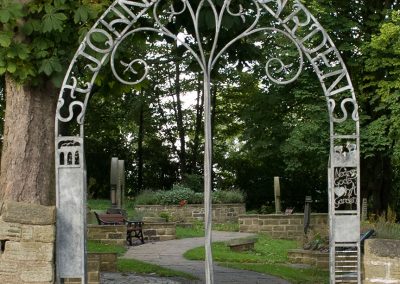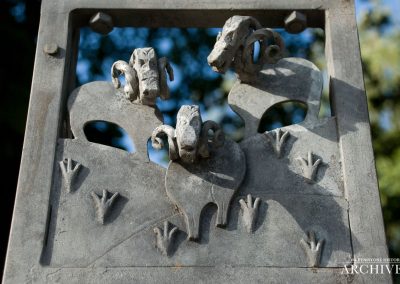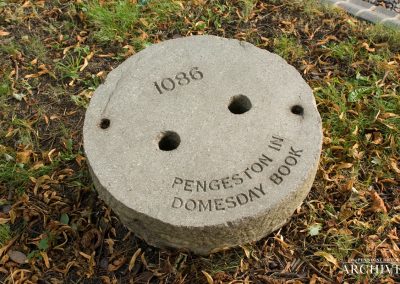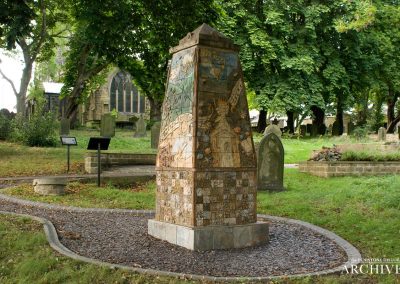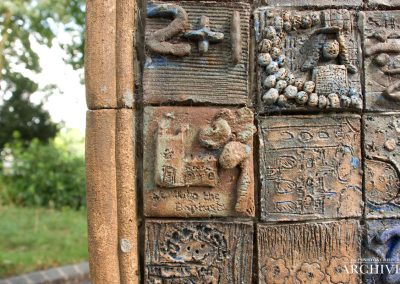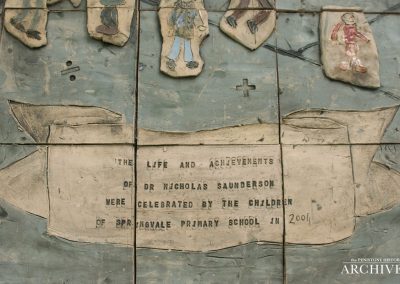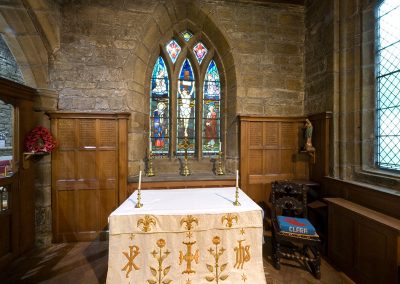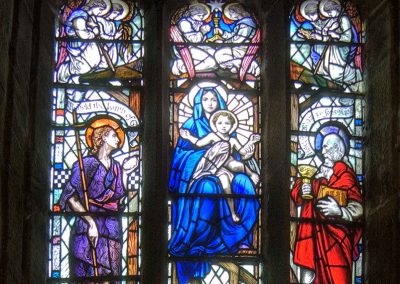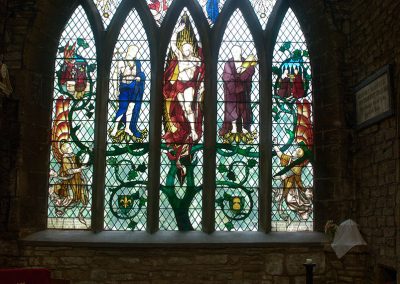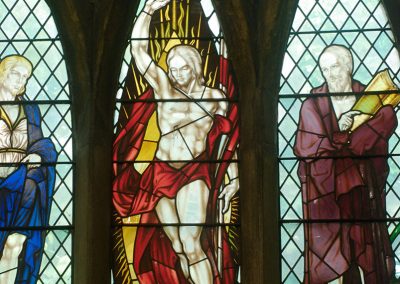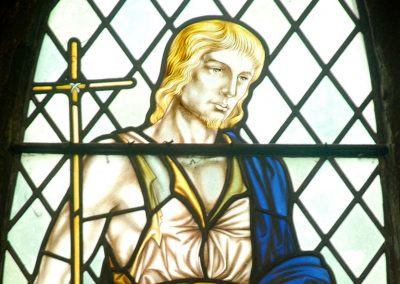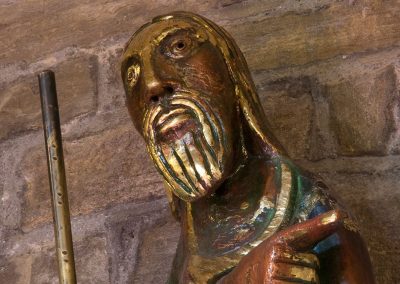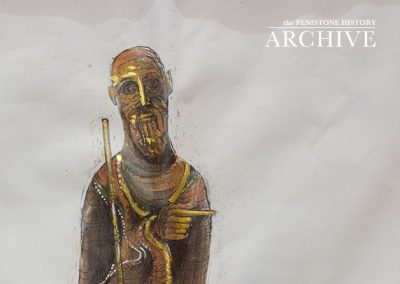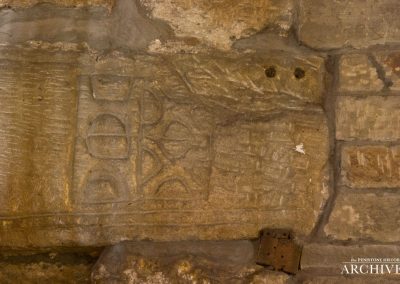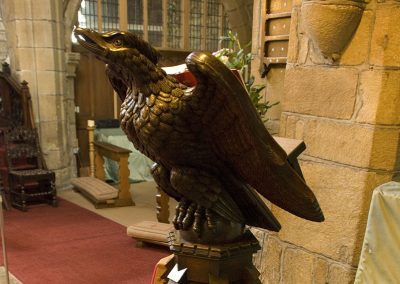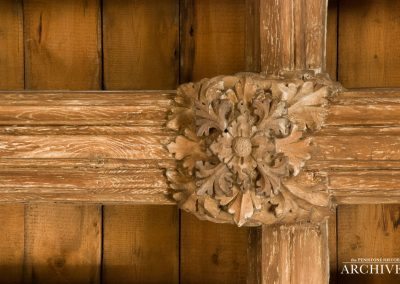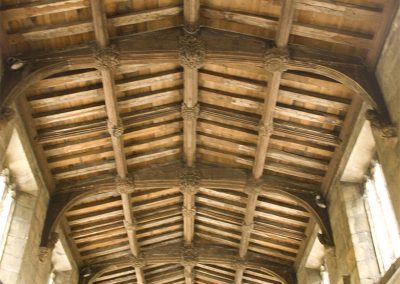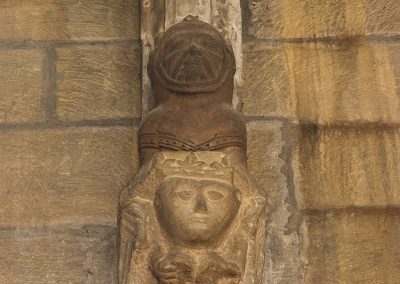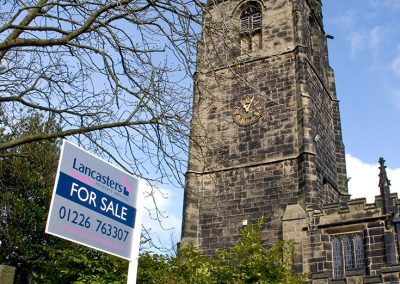(Scroll down for photos)
St. John’s Church, Penistone
St. Johns Church is a Grade 1 listed building and has been on the same site for 1000 years. Under your feet are the foundations of an earlier church from the 900s AD although most of the present building was erected in the 1300s. However there is evidence of earlier buildings in the structure which you can see today. There are also remains of a Saxon cross building into the church walls, possibly indicating an even older Christian involvement in the area. The Church and its surroundings hold many interesting subjects:-
THE TOWER dates from 1500 and stands 80 feet high with a peal of eight bells. During the Civil War the tower was garrisoned from summer 1643 to spring 1644 by Sir Francis Wortley, a leading cavalier in the district.
The LYCHGATE entrance to the church yard was constructed in 1959 as a memorial to Reverend Canon William Turnbull who was vicar at the church 1855-1915. Whilst the stainless steel weathervane on top of the tower, in the chapel of a fish, was handmade gift from a local resident in 1975. The fish is an early Christian symbol and its stainless steel represents local industry.
The CHURCH WINDOWS contain a large amount of stained glass much of it many hundreds of years old. There are two striking 20th century stained glass windows in the south aisle. The first is by a student of William Morris and depicts the story of Jesus preaching from the boat. The next window by Fredrick Cole is based on the childhood and ministry of Jesus.
THE CHURCHYARD around the church outside are many fine carvings, there is over the west door carved faces, and the many gargoyles are meant to be ugly and symbolise protection against sin, the world and the devil. Also there is a dial with many scratches in the face this is an early form of sundial, intended to show the times of services.
The HATCHMENT bears the arms of the Savilles of Ingbirchworth. This would have been carried in a funeral procession then hung over the doorway of the deceased person’s house before being displayed in church.
The FONT is probably as old as the building. It is now situated in the community space and serves to remind people of the start of the journey of faith.
The stonework around the south door is weathered and this is because the porch was not added until the 18th century. The porch was built from old stones from the ruins of a medieval chapel once attached to a hermitage along Chapel Lane.
SAXON STONES The oldest stones in the church can be found by the Ministry office. The chancel pillar contains the shaft of a Saxon cross and nearby are fragments of herringbone masonry and two 12th century corbel stones.
Mill Stone
There are several Mill stones carved with important dates from Penistone’s history. Ref: SG _DSC0187.
West Window
This is rarely seen due to its position behind the steps to the bell tower. Ref Sg HW-1C.

